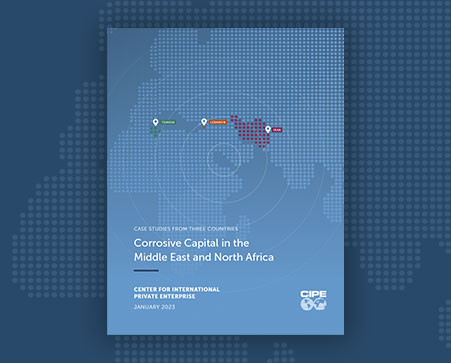EXECUTIVE SUMMARY
What is Corrosive Capital?
Aid and investment that comes primarily from states, or state-affiliated bodies, and penetrates governance gaps in recipient countries, weakening democratic governance within them. It requires local enablers, often in government. Although states have long used capital to influence and control other states, the rise of corrosive capital in its current form is a recent phenomenon that requires further study. For this report, CIPE partnered with local researchers to offer a unique and in-depth look at corrosive capital in a region that is particularly opaque as well as notably at risk. For readers in civil society, public officials, media and the wider policy community, this report sheds light on the phenomenon and is meant as a starting point for further study.
local enablers, often in government. Although states have long used capital to influence and control other states, the rise of corrosive capital in its current form is a recent phenomenon that requires further study. For this report, CIPE partnered with local researchers to offer a unique and in-depth look at corrosive capital in a region that is particularly opaque as well as notably at risk. For readers in civil society, public officials, media and the wider policy community, this report sheds light on the phenomenon and is meant as a starting point for further study.
Corrosive Capital in the MENA Region:
The dynamics of corrosive capital in the MENA region differ from other regions. In South America, Eastern Europe, and East Asia, for example, countries have run into trouble because of their dependence on outside sources of capital such as Russia or China. But because the MENA region contains both resource-rich and resourcepoor nations, capital can come from those external sources, but also from internal sources. Regional sources of capital can bring the same risks that other sources do, though these risks are often more implicit than explicit.
Published Date: January 31, 2023
